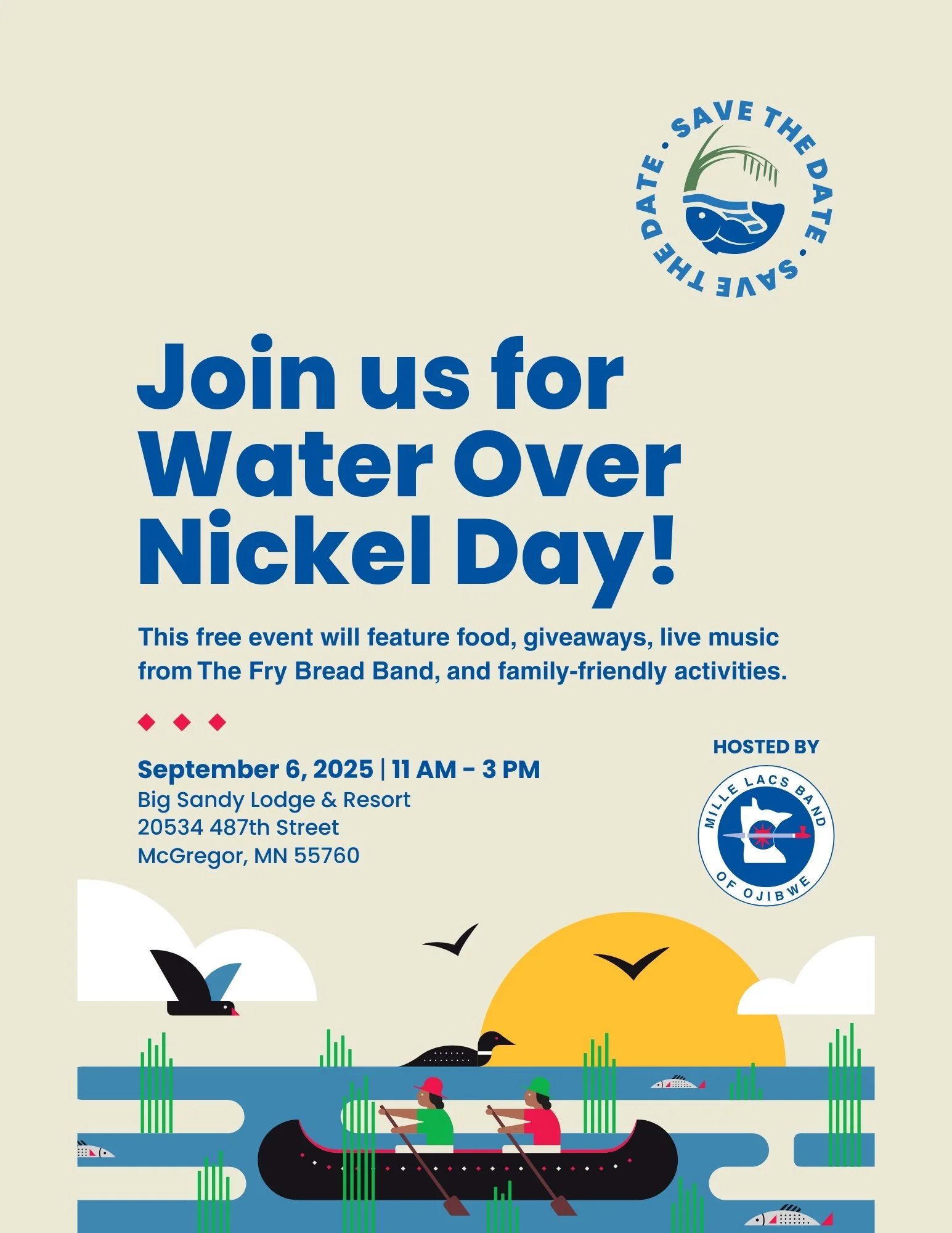WATER OVER NICKEL UPDATE: UNDERSTANDING MINNESOTA'S CONNECTION TO CLEAN WATER
By Kelly Applegate, Commissioner of Natural Resources
Water Over Nickel Published First-Ever Minnesota Water Outlook Survey
Water Over Nickel is grounded in our responsibility to protect clean water — not just for today, but for the generations yet to come. As part of our continued advocacy and education efforts, we launched the Minnesota Water Outlook survey to better understand how Minnesotans connect to clean water and their awareness of the threats it faces.
What did the survey tell us?
The Minnesota Water Outlook survey polled more than 1,000 Minnesotans this spring across all ages, genders, and key regions. The data shows that Minnesotans are united in their connection to clean water:
•86% of Minnesotans say protecting water is very or extremely important
•85% believe clean water is part of Minnesota’s identity, ranking it above all other issues surveyed
•95% say we must protect water for future generations
Yet, more than half of Minnesotans surveyed (58%) are unaware of the impact of nickel mining on water quality, and only 16% are aware of a proposed nickel mine that could endanger watersheds along the Mississippi River and throughout the metro area.
This data confirms that clean water is at the heart of who we are as Minnesotans, but it also reveals a critical gap in understanding. The Tamarack Nickel Mine, proposed just 1.3 miles from the Mille Lacs Band of Ojibwe reservation, is a real and immediate example. Its location — so close to vital lakes, rivers, watersheds, and Indigenous communities — underscores the urgent need for greater public understanding and engagement on this issue.
Why does this matter?
Nickel mines present a serious environmental risk. The metal mining sector accounted for 44% of toxic releases (1.43 billion pounds) according to the Environmental Protection Agency. The risk is especially significant in water-rich environments, like the region surrounding the proposed Tamarack Mine in Aitkin County, Minnesota, which sits upstream of vital drinking water sources, manoomin beds, and ecologically significant sites, including the Mississippi and St. Croix River basins.
There is no alternative to water. Once it’s polluted, there’s no going back.
What can you do?
We need your help to make sure more Minnesotans understand what’s at stake. Here’s how you can get involved:
•Share what you know with your friends, family, and community
•Follow Water Over Nickel on social media and repost information
•Encourage others to learn more by visiting WaterOverNickel.com
•Attend the second annual Water Over Nickel Day on Sept. 6 from 11-3 p.m. at Big Sandy Lodge and Resort
•Attend upcoming community meetings and Water Over Nickel Q&A sessions. The next session is scheduled for October 9 at 5:30-6:30 p.m.
•Please use the following link to join the Q&A session: https://tinyurl.com/mk5djxxr.
•Sign up to become a Water Ambassador and be part of the team protecting our water. Water Ambassadors volunteers help Water Over Nickel connect with Mille Lacs Band of Ojibwe members, local organizations, and people living near the Tamarack Mine.
Please email waterovernickel@gmail.com.
The decisions we make today will shape the legacy we leave for the next seven generations.
Learn more about Water Over Nickel at waterovernickel.com.


